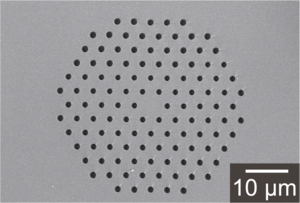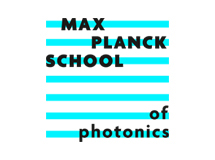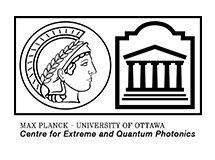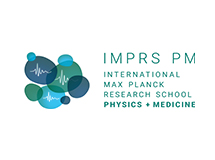Huge freedom in choice of fibre structure and materials
We draw fibres both from ultrahigh purity silica as well as from various other glasses fabricated in-house. In addition to having different glasses to choose from, we routinely fabricate a wide range of different fibre structures for use in many different projects throughout the institute and external collaborations. The technology permits a wide range of different structures to be realised, from simple periodic lattices of air channels to nanoweb structures and more complicated architectures. High quality hollow-core PCF is essential for the projects on gas-laser devices, optical sensors and particle guidance. Solid-core structures include dual-nanoweb fibre, twisted PCF and small-core PCFs for use in passive optoacoustic mode-locking of fibre lasers. The images on the right shows examples of structures made at MPL.
Soft-glasses such as heavy-metal oxides, fluorides and chalcogenides have the potential to extend the transparency window of optical fibres into the deep-ultraviolet and mid-infrared regions. In addition, PCFs fabricated from soft-glasses also possess favourable properties such as high linear and nonlinear refractive indices, and in some cases offer freedom from UV-induced optical damage and high rare-earth solubility. We have successfully produced fibres for supercontinuum generation, photochemistry, optomechanics, triplet-photon generation, holographic optical tweezing, and other novel applications.

Endlessly single-mode photonic crystal fibre (PCF), one of the most common types of PCF.
Single-ring hollow-core fibre with six capillaries in the cladding [Uebel (2016)].
Double-nanoweb fibre forming a thin planar waveguide [Butsch (2014)].
Single-nanoweb fibre forming a thin planar waveguide [Butsch (2014)].

![Single-ring hollow-core fibre with six capillaries in the cladding [Uebel (2016)].](/fileadmin/_processed_/5/e/csm_single-ring_fibre_with_scale_010f05df24.png)
![Double-nanoweb fibre forming a thin planar waveguide [Butsch (2014)].](/fileadmin/_processed_/d/f/csm_double-nanoweb_5a6d3f9414.png)
![Single-nanoweb fibre forming a thin planar waveguide [Butsch (2014)].](/fileadmin/_processed_/f/c/csm_single-nanoweb_closeup_7ecaf9ffc7.png)




